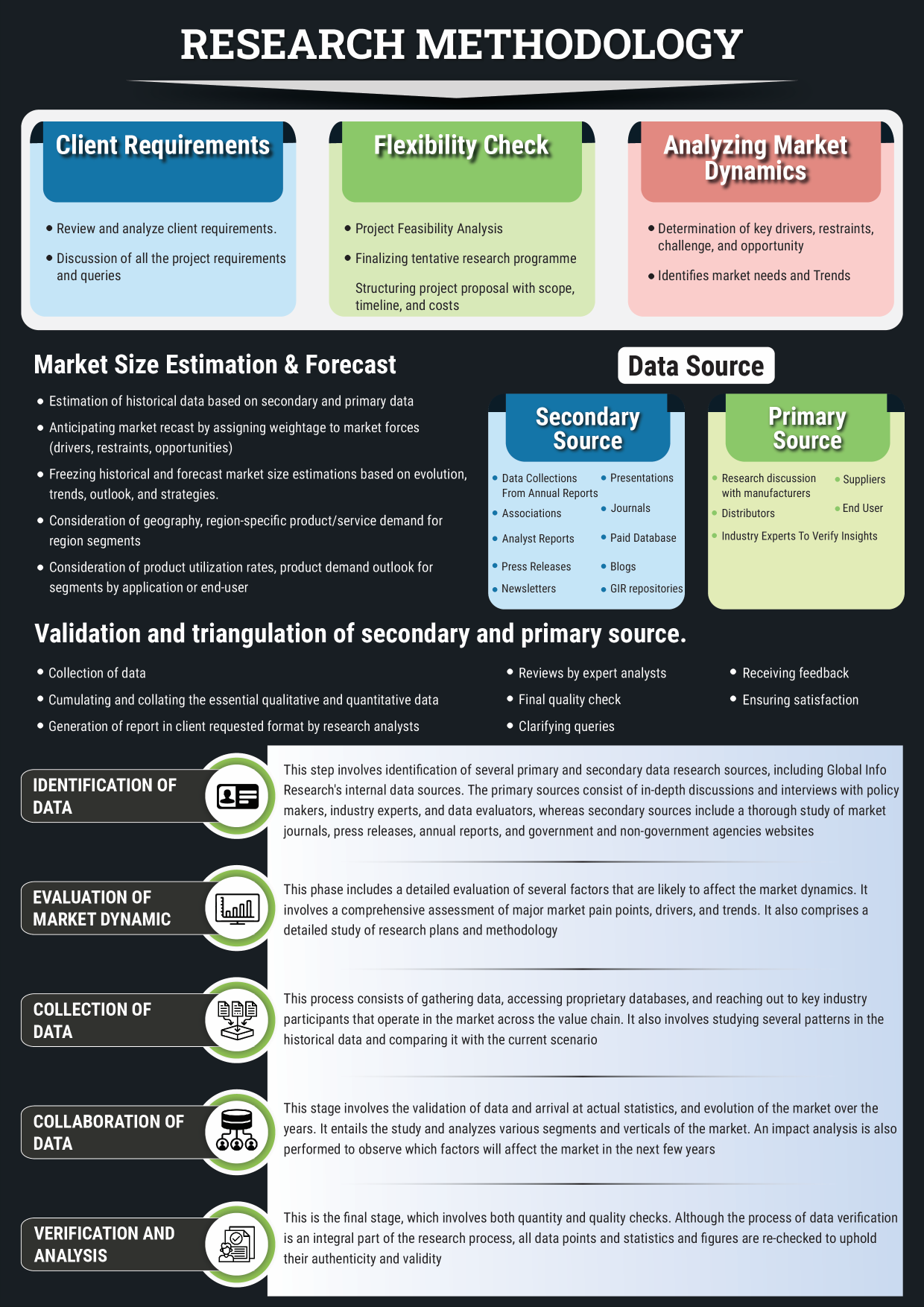Ventricular Assist Device Market 2025: Growth, Innovations, and Regional Insights
The ventricular assist device (VAD) market is rapidly evolving, driven by rising cardiovascular disease prevalence and technological breakthroughs. VADs are mechanical pumps that support or replace the function of a failing heart, primarily used in patients with severe heart failure. These devices serve either as a temporary solution until a heart transplant can be performed or as a long-term treatment for those who are not transplant candidates.
With increasing awareness of heart failure management and growing healthcare investments globally, the VAD market is anticipated to experience robust growth through 2025. Understanding the key market drivers, innovative developments, regional dynamics, and strategic challenges is critical for stakeholders in this dynamic landscape.
Market Drivers: Key Factors Fueling Demand
Several core factors are propelling the ventricular assist device market forward:
- Increasing Burden of Heart Failure: Globally, the rising incidence of heart failure due to aging populations, lifestyle diseases such as diabetes and hypertension, and improved diagnostic capabilities is driving demand for advanced cardiac support.
- Shortage of Donor Hearts: The limited availability of donor hearts for transplantation has made VADs an essential alternative for sustaining patients’ cardiac functions.
- Technological Advancements: Progress in device miniaturization, safety features, and ease of implantation is expanding the patient base eligible for VAD therapy.
- Government and Private Healthcare Investments: Enhanced funding and infrastructure development in cardiovascular care, particularly in emerging markets, is improving accessibility.
- Favorable Insurance and Reimbursement Policies: Robust reimbursement frameworks in developed countries are increasing patient affordability and adoption rates.
- Growing Awareness and Acceptance: Education efforts targeted at both clinicians and patients have boosted the understanding and acceptance of VAD therapies.
Innovations Shaping the VAD Landscape
Innovation continues to be a pivotal force enhancing the efficacy and adoption of ventricular assist devices:
- Miniaturization and Portable Designs: Newer devices are smaller, lighter, and less invasive, leading to quicker recoveries and improved patient comfort.
- Fully Implantable Systems: Advances have led to fully implantable VADs that eliminate external driveline infections, a major complication in traditional systems.
- Biocompatible Materials: Cutting-edge biomaterials minimize blood clotting and inflammatory responses, ensuring longer device lifespan and patient safety.
- Smart Monitoring Technologies: Integration of wireless connectivity and remote patient monitoring allows clinicians to track device performance and intervene early if complications arise.
- Improved Battery Life and Power Management: Enhanced battery technologies increase device portability and reduce hospital visits.
- AI and Predictive Analytics: Emerging artificial intelligence applications aid in personalizing device management and improving patient outcomes.
Regional Market Dynamics: A Global Perspective
The market growth varies regionally, influenced by economic conditions, healthcare infrastructure, and demographic factors:
- North America
North America leads the VAD market due to its advanced healthcare infrastructure, early adoption of new technologies, and supportive reimbursement policies. The United States, in particular, benefits from high investment in cardiovascular research and a large patient pool. - Europe
Europe exhibits steady growth driven by an aging population and rising heart failure rates. Countries such as Germany, France, and the UK offer comprehensive healthcare coverage, facilitating wider access to VADs. Innovations focused on patient-centric care models are gaining traction. - Asia-Pacific
Asia-Pacific is the fastest-growing region, fueled by increasing cardiovascular disease prevalence and expanding healthcare infrastructure. Rapid urbanization, government healthcare reforms, and rising disposable incomes in countries like China, India, and Japan are driving market expansion. - Rest of the World
Emerging markets in Latin America, the Middle East, and Africa show growing potential, though limited healthcare infrastructure and affordability remain challenges. Collaborations with local governments and customized pricing strategies are crucial for deeper market penetration.
Strategic Considerations for Market Players
To maximize market share and sustain growth, companies must focus on several strategic areas:
- Collaborative Ecosystems: Building partnerships with healthcare providers, research bodies, and policymakers to accelerate innovation and adoption.
- Patient-Focused Innovation: Designing devices that emphasize ease of use, minimal invasiveness, and safety to enhance patient experience and compliance.
- Regulatory Compliance and Speed to Market: Navigating complex regulatory environments effectively to ensure timely product approvals worldwide.
- Regional Customization: Tailoring product offerings and pricing to suit local market needs and economic realities.
- Advocacy for Reimbursement: Engaging with insurers and healthcare payers to expand coverage and reduce patient financial burden.
- Robust Clinical Training and Support: Providing comprehensive training for healthcare professionals and strong after-sales support to improve clinical outcomes.
- Ongoing Research and Development: Investing continuously in R&D to address challenges like thrombosis, infection risks, and device durability.
Conclusion: Outlook for the Ventricular Assist Device Market
The ventricular assist device market is positioned for significant growth by 2025, driven by technological innovation, growing cardiovascular disease prevalence, and expanding global healthcare access. As devices become more sophisticated, patient-friendly, and connected, they offer improved survival rates and quality of life for patients with advanced heart failure.
Successful market players will be those that combine innovation with strategic regional insights, regulatory agility, and strong clinical partnerships. The future of cardiac care hinges on the continued evolution of VAD technologies, making this market a critical frontier in healthcare innovation and patient management.
NOTE:
Quants and Trends is proud to offer an extensive portfolio of meticulously researched healthcare market reports, numbering in the thousands. We also provide tailored customization services to ensure our insights align precisely with your strategic objectives and informational needs. For personalized assistance or to discuss your specific requirements, we invite you to get in touch with our team. We also encourage you to request a complimentary sample PDF report. Please visit our Sample Request Page to receive yours today.
Key Market Players
AbioMed
Abbott (Thoratec)
Medtronic (HeartWare)
Berlin Heart
Segmentation By Type
LVADs
RVADs
BIVADs
Segmentation By Application
Bridge-to-transplant (BTT)
Destination Therapy (DT)
Other
Segmentation By Region
North America (United States, Canada and Mexico)
Europe (Germany, France, United Kingdom, Russia, Italy, and Rest of Europe)
Asia-Pacific (China, Japan, Korea, India, Southeast Asia, and Australia)
South America (Brazil, Argentina, Colombia, and Rest of South America)
Middle East & Africa (Saudi Arabia, UAE, Egypt, South Africa, and Rest of Middle East & Africa)
Market SWOT Analysis
What are the strengths of the Ventricular Assist Device Market in 2025?
The Ventricular Assist Device (VAD) market is expected to benefit from growing advancements in technology, improving device efficiency, and longer lifespan. Enhanced design and miniaturization of VADs will enable better patient outcomes and a broader patient base. Increased awareness about heart failure treatments also supports market growth.
What are the weaknesses of the Ventricular Assist Device Market in 2025?
High costs associated with the devices and their implantation procedures may limit accessibility for some patients. Additionally, the complexity of post-surgical care and the risk of complications such as infections or device malfunction could be seen as barriers to widespread adoption.
What are the opportunities in the Ventricular Assist Device Market in 2025?
There is a significant opportunity for growth in emerging markets, where heart disease prevalence is rising but medical infrastructure is still developing. Additionally, collaborations between medical device companies and healthcare providers to improve device accessibility and affordability will enhance market potential.
What are the threats to the Ventricular Assist Device Market in 2025?
Regulatory hurdles and the complexity of obtaining market approvals could hinder the growth of the VAD market. Moreover, competition from alternative treatments, such as heart transplants or stem cell therapies, may pose a challenge. A shift toward minimally invasive treatments may also impact the demand for VADs.
Market PESTEL Analysis
What are the political factors influencing the Ventricular Assist Device Market in 2025?
Government healthcare policies and reimbursement systems play a significant role in shaping the adoption of Ventricular Assist Devices (VADs). Political stability and regulatory support for heart failure treatments will help drive the market. However, shifts in healthcare funding or policy changes could impact market accessibility and affordability.
What are the economic factors influencing the Ventricular Assist Device Market in 2025?
Economic factors such as healthcare budgets, income levels, and insurance coverage significantly affect the demand for VADs. High-cost devices may limit access in economically constrained regions. However, economic growth in emerging markets could provide new opportunities for market expansion.
What are the social factors influencing the Ventricular Assist Device Market in 2025?
An aging global population and increased awareness of heart disease are positive social factors for the market. As the prevalence of heart failure rises, there is growing acceptance of advanced heart devices like VADs. However, patient reluctance to adopt life-changing technologies could slow market growth.
What are the technological factors influencing the Ventricular Assist Device Market in 2025?
Technological advancements in VAD design, such as miniaturization, improved power sources, and smarter monitoring systems, are driving the market. Innovations aimed at reducing complications, enhancing device longevity, and improving patient comfort will boost adoption.
What are the environmental factors influencing the Ventricular Assist Device Market in 2025?
Environmental factors, including sustainable manufacturing processes and energy-efficient devices, are becoming increasingly important. Regulatory pressure on environmental standards could influence how VADs are produced and disposed of. However, the primary environmental concern remains the safe disposal of medical waste, including used devices.
What are the legal factors influencing the Ventricular Assist Device Market in 2025?
Strict medical device regulations and certification requirements will impact the market's development. Compliance with global standards and obtaining market approvals from regulatory bodies like the FDA will be crucial. Legal challenges related to product liability and patent protection may also affect the growth of VAD companies.
Market SIPOC Analysis
Who are the suppliers in the Ventricular Assist Device Market 2025?
Suppliers include manufacturers of medical devices, specialized component suppliers (e.g., motors, batteries, and sensors), and research organizations developing innovative technologies for heart failure treatments. Additionally, suppliers of raw materials for device construction and pharmaceutical companies involved in related treatments contribute to the supply chain.
What are the inputs to the Ventricular Assist Device Market 2025?
Inputs involve advanced engineering materials, specialized components like pumps and control systems, regulatory compliance data, and patient health information. Clinical trials, research findings, and technological advancements in biocompatibility and device miniaturization are also essential inputs.
What are the processes in the Ventricular Assist Device Market 2025?
Processes include device design and development, clinical testing, regulatory approval, manufacturing, and distribution. Post-implantation monitoring and patient follow-up also form key processes to ensure device efficacy and patient safety. Continuous research and feedback loops contribute to product improvements.
What are the outputs of the Ventricular Assist Device Market 2025?
Outputs include fully developed and approved VAD devices ready for implantation, along with supporting services such as post-surgery care, training for healthcare providers, and patient education materials. The output also includes data on clinical outcomes and device performance.
Who are the customers of the Ventricular Assist Device Market 2025?
Customers include hospitals, heart centers, and specialized medical facilities that provide heart failure treatment. Additionally, patients with advanced heart failure, as well as healthcare providers such as cardiologists, surgeons, and nurses, are key customers in the VAD market.
Market Porter's Five Forces
What is the threat of new entrants in the Ventricular Assist Device Market 2025?
The threat of new entrants is moderate. While the market holds high potential, the complexity of developing VADs, along with regulatory hurdles and high capital investment required for research and development, limits entry for new players. Established companies with experience in medical device manufacturing hold a competitive edge.
What is the bargaining power of suppliers in the Ventricular Assist Device Market 2025?
The bargaining power of suppliers is relatively high due to the specialized nature of components required for VADs. Companies that provide advanced materials, precision parts, and critical technologies control a niche segment, and a limited number of qualified suppliers increases their leverage in pricing and supply terms.
What is the bargaining power of buyers in the Ventricular Assist Device Market 2025?
The bargaining power of buyers is moderate. While hospitals and healthcare providers can negotiate pricing, the specialized nature of VADs means that there are fewer alternatives. Additionally, patients have limited choices as the devices are highly tailored to their medical needs, which gives manufacturers some pricing power.
What is the threat of substitutes in the Ventricular Assist Device Market 2025?
The threat of substitutes is moderate. While alternative treatments such as heart transplants or medical management with drugs exist, they are not always viable or effective for all patients. However, advancements in other heart failure treatments or less invasive devices could pose competition for the VAD market in the long term.
What is the intensity of competitive rivalry in the Ventricular Assist Device Market 2025?
The intensity of competitive rivalry is high. Established players dominate the market, but as demand grows and the technology advances, more competitors are entering the space. Companies are continuously innovating to improve device performance and reduce costs, leading to fierce competition for market share.
Market Upstream Analysis
What are the key upstream factors influencing the Ventricular Assist Device Market 2025?
Key upstream factors include the availability of high-quality materials, technological innovations in medical device manufacturing, and advancements in biomedical research. Partnerships with research institutions to develop more efficient, cost-effective, and durable VADs will also play a significant role in shaping the market.
How does regulatory compliance impact the Ventricular Assist Device Market 2025?
Regulatory compliance is a critical upstream factor. The lengthy approval process and stringent regulations for medical devices can delay market entry and increase costs. Manufacturers must align their designs with international standards to gain approval from regulatory bodies like the FDA and EMA, impacting time-to-market and profitability.
What role do suppliers of components and raw materials play in the Ventricular Assist Device Market 2025?
Suppliers of components such as motors, batteries, sensors, and biocompatible materials play a vital role in the upstream supply chain. The quality, reliability, and cost of these components directly affect the performance and cost-effectiveness of VADs. Any disruptions or shortages in the supply of critical materials could lead to delays in production and higher costs.
How do R&D investments influence the Ventricular Assist Device Market 2025?
R&D investments are crucial to the continuous improvement of VAD technology. The development of smaller, more efficient, and longer-lasting devices relies heavily on innovation. Companies that invest in research to improve the performance, durability, and user-friendliness of VADs will maintain a competitive advantage in the market.
How does the availability of skilled labor affect the Ventricular Assist Device Market 2025?
The availability of skilled labor in fields like bioengineering, medical device manufacturing, and clinical research significantly impacts the development and production of VADs. Shortages in expertise or workforce disruptions could delay manufacturing processes, affect product quality, and hinder timely market introduction.
Market Midstream Analysis
What are the key midstream factors influencing the Ventricular Assist Device Market 2025?
Key midstream factors include the manufacturing processes, quality control, and distribution networks for VADs. Efficient production techniques, such as automation and precision manufacturing, are essential to meet demand and maintain quality standards. Distribution partnerships with hospitals and healthcare providers ensure the timely delivery of devices to patients.
How does supply chain management affect the Ventricular Assist Device Market 2025?
Effective supply chain management is critical in the midstream segment to ensure timely availability of components, such as batteries and pumps, for device assembly. Any disruptions in the supply chain, such as delays or shortages of raw materials, could affect production timelines and costs, ultimately influencing device availability in the market.
What role do partnerships and collaborations play in the Ventricular Assist Device Market 2025?
Partnerships and collaborations between manufacturers, healthcare institutions, and technology developers are crucial for the advancement of VADs. Collaborations help improve device performance, reduce production costs, and expand the customer base. Partnerships with hospitals can also streamline post-implantation care and patient monitoring.
How does regulatory approval impact the midstream segment of the Ventricular Assist Device Market 2025?
Regulatory approval is a major factor in the midstream segment as it determines the speed at which VADs can be mass-produced and distributed. Compliance with regulatory standards from bodies like the FDA ensures that devices meet safety and efficacy requirements before reaching the market, impacting production timelines and market entry.
What are the challenges in manufacturing Ventricular Assist Devices in 2025?
Manufacturing challenges include the high complexity of VADs, which require precision and integration of advanced technologies. Additionally, maintaining cost-effectiveness while ensuring quality standards can be difficult. Manufacturers must also manage the scalability of production to meet rising demand while adhering to regulatory requirements.
Market Downstream Analysis
What are the key downstream factors influencing the Ventricular Assist Device Market 2025?
Key downstream factors include the healthcare infrastructure, physician adoption, and patient acceptance of VADs. The ability of hospitals to provide specialized care for patients using VADs, along with the training of medical staff, is crucial for market growth. Furthermore, patient education and awareness are essential to ensuring proper usage and long-term success.
How does the pricing strategy impact the Ventricular Assist Device Market 2025?
Pricing plays a significant role in the downstream segment. Due to the high costs associated with VAD implantation, pricing strategies will affect accessibility for healthcare institutions and patients, particularly in emerging markets. Offering more affordable or flexible payment options may enhance adoption rates across various demographics.
How does the distribution network influence the Ventricular Assist Device Market 2025?
The distribution network is a critical downstream factor. Ensuring that VADs are available at major healthcare facilities and specialty clinics is essential for reaching the target patient population. Efficient logistics and partnerships with medical supply distributors are vital to meeting demand and ensuring timely delivery of devices for surgeries.
What is the role of after-sales service in the Ventricular Assist Device Market 2025?
After-sales service, including patient monitoring, device maintenance, and troubleshooting, plays a crucial role in the long-term success of VADs. Ensuring that healthcare providers and patients have access to ongoing support helps manage complications and improve the overall outcome of the treatment, which influences market satisfaction and repeat business.
How does patient access to post-implantation care impact the Ventricular Assist Device Market 2025?
Access to post-implantation care significantly impacts the success of VAD treatment. Proper follow-up care, including regular check-ups and monitoring, is essential for patient recovery and device performance. The availability of skilled healthcare providers and specialized clinics for ongoing care can increase patient trust and drive market demand.
Chapter 1, to describe Ventricular Assist Device product scope, market overview, market estimation caveats and base year.
Chapter 2, to profile the top manufacturers of Ventricular Assist Device, with price, sales, revenue and global market share of Ventricular Assist Device from 2018 to 2023.
Chapter 3, the Ventricular Assist Device competitive situation, sales quantity, revenue and global market share of top manufacturers are analyzed emphatically by landscape contrast.
Chapter 4, the Ventricular Assist Device breakdown data are shown at the regional level, to show the sales quantity, consumption value and growth by regions, from 2018 to 2029.
Chapter 5 and 6, to segment the sales by Type and application, with sales market share and growth rate by type, application, from 2018 to 2029.
Chapter 7, 8, 9, 10 and 11, to break the sales data at the country level, with sales quantity, consumption value and market share for key countries in the world, from 2017 to 2022.and Ventricular Assist Device market forecast, by regions, type and application, with sales and revenue, from 2024 to 2029.
Chapter 12, market dynamics, drivers, restraints, trends, Porters Five Forces analysis, and Influence of COVID-19 and Russia-Ukraine War.
Chapter 13, the key raw materials and key suppliers, and industry chain of Ventricular Assist Device.
Chapter 14 and 15, to describe Ventricular Assist Device sales channel, distributors, customers, research findings and conclusion.
1 Market Overview
1.1 Product Overview and Scope of Ventricular Assist Device
1.2 Market Estimation Caveats and Base Year
1.3 Market Analysis by Type
1.3.1 Overview: Global Ventricular Assist Device Consumption Value by Type: 2018 Versus 2022 Versus 2029
1.3.2 LVADs
1.3.3 RVADs
1.3.4 BIVADs
1.4 Market Analysis by Application
1.4.1 Overview: Global Ventricular Assist Device Consumption Value by Application: 2018 Versus 2022 Versus 2029
1.4.2 Bridge-to-transplant (BTT)
1.4.3 Destination Therapy (DT)
1.4.4 Other
1.5 Global Ventricular Assist Device Market Size & Forecast
1.5.1 Global Ventricular Assist Device Consumption Value (2018 & 2022 & 2029)
1.5.2 Global Ventricular Assist Device Sales Quantity (2018-2029)
1.5.3 Global Ventricular Assist Device Average Price (2018-2029)
2 Manufacturers Profiles
2.1 AbioMed
2.1.1 AbioMed Details
2.1.2 AbioMed Major Business
2.1.3 AbioMed Ventricular Assist Device Product and Services
2.1.4 AbioMed Ventricular Assist Device Sales Quantity, Average Price, Revenue, Gross Margin and Market Share (2018-2023)
2.1.5 AbioMed Recent Developments/Updates
2.2 Abbott (Thoratec)
2.2.1 Abbott (Thoratec) Details
2.2.2 Abbott (Thoratec) Major Business
2.2.3 Abbott (Thoratec) Ventricular Assist Device Product and Services
2.2.4 Abbott (Thoratec) Ventricular Assist Device Sales Quantity, Average Price, Revenue, Gross Margin and Market Share (2018-2023)
2.2.5 Abbott (Thoratec) Recent Developments/Updates
2.3 Medtronic (HeartWare)
2.3.1 Medtronic (HeartWare) Details
2.3.2 Medtronic (HeartWare) Major Business
2.3.3 Medtronic (HeartWare) Ventricular Assist Device Product and Services
2.3.4 Medtronic (HeartWare) Ventricular Assist Device Sales Quantity, Average Price, Revenue, Gross Margin and Market Share (2018-2023)
2.3.5 Medtronic (HeartWare) Recent Developments/Updates
2.4 Berlin Heart
2.4.1 Berlin Heart Details
2.4.2 Berlin Heart Major Business
2.4.3 Berlin Heart Ventricular Assist Device Product and Services
2.4.4 Berlin Heart Ventricular Assist Device Sales Quantity, Average Price, Revenue, Gross Margin and Market Share (2018-2023)
2.4.5 Berlin Heart Recent Developments/Updates
3 Competitive Environment: Ventricular Assist Device by Manufacturer
3.1 Global Ventricular Assist Device Sales Quantity by Manufacturer (2018-2023)
3.2 Global Ventricular Assist Device Revenue by Manufacturer (2018-2023)
3.3 Global Ventricular Assist Device Average Price by Manufacturer (2018-2023)
3.4 Market Share Analysis (2022)
3.4.1 Producer Shipments of Ventricular Assist Device by Manufacturer Revenue ($MM) and Market Share (%): 2022
3.4.2 Top 3 Ventricular Assist Device Manufacturer Market Share in 2022
3.4.2 Top 6 Ventricular Assist Device Manufacturer Market Share in 2022
3.5 Ventricular Assist Device Market: Overall Company Footprint Analysis
3.5.1 Ventricular Assist Device Market: Region Footprint
3.5.2 Ventricular Assist Device Market: Company Product Type Footprint
3.5.3 Ventricular Assist Device Market: Company Product Application Footprint
3.6 New Market Entrants and Barriers to Market Entry
3.7 Mergers, Acquisition, Agreements, and Collaborations
4 Consumption Analysis by Region
4.1 Global Ventricular Assist Device Market Size by Region
4.1.1 Global Ventricular Assist Device Sales Quantity by Region (2018-2029)
4.1.2 Global Ventricular Assist Device Consumption Value by Region (2018-2029)
4.1.3 Global Ventricular Assist Device Average Price by Region (2018-2029)
4.2 North America Ventricular Assist Device Consumption Value (2018-2029)
4.3 Europe Ventricular Assist Device Consumption Value (2018-2029)
4.4 Asia-Pacific Ventricular Assist Device Consumption Value (2018-2029)
4.5 South America Ventricular Assist Device Consumption Value (2018-2029)
4.6 Middle East and Africa Ventricular Assist Device Consumption Value (2018-2029)
5 Market Segment by Type
5.1 Global Ventricular Assist Device Sales Quantity by Type (2018-2029)
5.2 Global Ventricular Assist Device Consumption Value by Type (2018-2029)
5.3 Global Ventricular Assist Device Average Price by Type (2018-2029)
6 Market Segment by Application
6.1 Global Ventricular Assist Device Sales Quantity by Application (2018-2029)
6.2 Global Ventricular Assist Device Consumption Value by Application (2018-2029)
6.3 Global Ventricular Assist Device Average Price by Application (2018-2029)
7 North America
7.1 North America Ventricular Assist Device Sales Quantity by Type (2018-2029)
7.2 North America Ventricular Assist Device Sales Quantity by Application (2018-2029)
7.3 North America Ventricular Assist Device Market Size by Country
7.3.1 North America Ventricular Assist Device Sales Quantity by Country (2018-2029)
7.3.2 North America Ventricular Assist Device Consumption Value by Country (2018-2029)
7.3.3 United States Market Size and Forecast (2018-2029)
7.3.4 Canada Market Size and Forecast (2018-2029)
7.3.5 Mexico Market Size and Forecast (2018-2029)
8 Europe
8.1 Europe Ventricular Assist Device Sales Quantity by Type (2018-2029)
8.2 Europe Ventricular Assist Device Sales Quantity by Application (2018-2029)
8.3 Europe Ventricular Assist Device Market Size by Country
8.3.1 Europe Ventricular Assist Device Sales Quantity by Country (2018-2029)
8.3.2 Europe Ventricular Assist Device Consumption Value by Country (2018-2029)
8.3.3 Germany Market Size and Forecast (2018-2029)
8.3.4 France Market Size and Forecast (2018-2029)
8.3.5 United Kingdom Market Size and Forecast (2018-2029)
8.3.6 Russia Market Size and Forecast (2018-2029)
8.3.7 Italy Market Size and Forecast (2018-2029)
9 Asia-Pacific
9.1 Asia-Pacific Ventricular Assist Device Sales Quantity by Type (2018-2029)
9.2 Asia-Pacific Ventricular Assist Device Sales Quantity by Application (2018-2029)
9.3 Asia-Pacific Ventricular Assist Device Market Size by Region
9.3.1 Asia-Pacific Ventricular Assist Device Sales Quantity by Region (2018-2029)
9.3.2 Asia-Pacific Ventricular Assist Device Consumption Value by Region (2018-2029)
9.3.3 China Market Size and Forecast (2018-2029)
9.3.4 Japan Market Size and Forecast (2018-2029)
9.3.5 Korea Market Size and Forecast (2018-2029)
9.3.6 India Market Size and Forecast (2018-2029)
9.3.7 Southeast Asia Market Size and Forecast (2018-2029)
9.3.8 Australia Market Size and Forecast (2018-2029)
10 South America
10.1 South America Ventricular Assist Device Sales Quantity by Type (2018-2029)
10.2 South America Ventricular Assist Device Sales Quantity by Application (2018-2029)
10.3 South America Ventricular Assist Device Market Size by Country
10.3.1 South America Ventricular Assist Device Sales Quantity by Country (2018-2029)
10.3.2 South America Ventricular Assist Device Consumption Value by Country (2018-2029)
10.3.3 Brazil Market Size and Forecast (2018-2029)
10.3.4 Argentina Market Size and Forecast (2018-2029)
11 Middle East & Africa
11.1 Middle East & Africa Ventricular Assist Device Sales Quantity by Type (2018-2029)
11.2 Middle East & Africa Ventricular Assist Device Sales Quantity by Application (2018-2029)
11.3 Middle East & Africa Ventricular Assist Device Market Size by Country
11.3.1 Middle East & Africa Ventricular Assist Device Sales Quantity by Country (2018-2029)
11.3.2 Middle East & Africa Ventricular Assist Device Consumption Value by Country (2018-2029)
11.3.3 Turkey Market Size and Forecast (2018-2029)
11.3.4 Egypt Market Size and Forecast (2018-2029)
11.3.5 Saudi Arabia Market Size and Forecast (2018-2029)
11.3.6 South Africa Market Size and Forecast (2018-2029)
12 Market Dynamics
12.1 Ventricular Assist Device Market Drivers
12.2 Ventricular Assist Device Market Restraints
12.3 Ventricular Assist Device Trends Analysis
12.4 Porters Five Forces Analysis
12.4.1 Threat of New Entrants
12.4.2 Bargaining Power of Suppliers
12.4.3 Bargaining Power of Buyers
12.4.4 Threat of Substitutes
12.4.5 Competitive Rivalry
12.5 Influence of COVID-19 and Russia-Ukraine War
12.5.1 Influence of COVID-19
12.5.2 Influence of Russia-Ukraine War
13 Raw Material and Industry Chain
13.1 Raw Material of Ventricular Assist Device and Key Manufacturers
13.2 Manufacturing Costs Percentage of Ventricular Assist Device
13.3 Ventricular Assist Device Production Process
13.4 Ventricular Assist Device Industrial Chain
14 Shipments by Distribution Channel
14.1 Sales Channel
14.1.1 Direct to End-User
14.1.2 Distributors
14.2 Ventricular Assist Device Typical Distributors
14.3 Ventricular Assist Device Typical Customers
15 Research Findings and Conclusion
16 Appendix
16.1 Methodology
16.2 Research Process and Data Source
16.3 Disclaimer
List of Tables
Table 1. Global Ventricular Assist Device Consumption Value by Type, (USD Million), 2018 & 2022 & 2029
Table 2. Global Ventricular Assist Device Consumption Value by Application, (USD Million), 2018 & 2022 & 2029
Table 3. AbioMed Basic Information, Manufacturing Base and Competitors
Table 4. AbioMed Major Business
Table 5. AbioMed Ventricular Assist Device Product and Services
Table 6. AbioMed Ventricular Assist Device Sales Quantity (K Units), Average Price (K USD/Unit), Revenue (USD Million), Gross Margin and Market Share (2018-2023)
Table 7. AbioMed Recent Developments/Updates
Table 8. Abbott (Thoratec) Basic Information, Manufacturing Base and Competitors
Table 9. Abbott (Thoratec) Major Business
Table 10. Abbott (Thoratec) Ventricular Assist Device Product and Services
Table 11. Abbott (Thoratec) Ventricular Assist Device Sales Quantity (K Units), Average Price (K USD/Unit), Revenue (USD Million), Gross Margin and Market Share (2018-2023)
Table 12. Abbott (Thoratec) Recent Developments/Updates
Table 13. Medtronic (HeartWare) Basic Information, Manufacturing Base and Competitors
Table 14. Medtronic (HeartWare) Major Business
Table 15. Medtronic (HeartWare) Ventricular Assist Device Product and Services
Table 16. Medtronic (HeartWare) Ventricular Assist Device Sales Quantity (K Units), Average Price (K USD/Unit), Revenue (USD Million), Gross Margin and Market Share (2018-2023)
Table 17. Medtronic (HeartWare) Recent Developments/Updates
Table 18. Berlin Heart Basic Information, Manufacturing Base and Competitors
Table 19. Berlin Heart Major Business
Table 20. Berlin Heart Ventricular Assist Device Product and Services
Table 21. Berlin Heart Ventricular Assist Device Sales Quantity (K Units), Average Price (K USD/Unit), Revenue (USD Million), Gross Margin and Market Share (2018-2023)
Table 22. Berlin Heart Recent Developments/Updates
Table 23. Global Ventricular Assist Device Sales Quantity by Manufacturer (2018-2023) & (K Units)
Table 24. Global Ventricular Assist Device Revenue by Manufacturer (2018-2023) & (USD Million)
Table 25. Global Ventricular Assist Device Average Price by Manufacturer (2018-2023) & (K USD/Unit)
Table 26. Market Position of Manufacturers in Ventricular Assist Device, (Tier 1, Tier 2, and Tier 3), Based on Consumption Value in 2022
Table 27. Head Office and Ventricular Assist Device Production Site of Key Manufacturer
Table 28. Ventricular Assist Device Market: Company Product Type Footprint
Table 29. Ventricular Assist Device Market: Company Product Application Footprint
Table 30. Ventricular Assist Device New Market Entrants and Barriers to Market Entry
Table 31. Ventricular Assist Device Mergers, Acquisition, Agreements, and Collaborations
Table 32. Global Ventricular Assist Device Sales Quantity by Region (2018-2023) & (K Units)
Table 33. Global Ventricular Assist Device Sales Quantity by Region (2024-2029) & (K Units)
Table 34. Global Ventricular Assist Device Consumption Value by Region (2018-2023) & (USD Million)
Table 35. Global Ventricular Assist Device Consumption Value by Region (2024-2029) & (USD Million)
Table 36. Global Ventricular Assist Device Average Price by Region (2018-2023) & (K USD/Unit)
Table 37. Global Ventricular Assist Device Average Price by Region (2024-2029) & (K USD/Unit)
Table 38. Global Ventricular Assist Device Sales Quantity by Type (2018-2023) & (K Units)
Table 39. Global Ventricular Assist Device Sales Quantity by Type (2024-2029) & (K Units)
Table 40. Global Ventricular Assist Device Consumption Value by Type (2018-2023) & (USD Million)
Table 41. Global Ventricular Assist Device Consumption Value by Type (2024-2029) & (USD Million)
Table 42. Global Ventricular Assist Device Average Price by Type (2018-2023) & (K USD/Unit)
Table 43. Global Ventricular Assist Device Average Price by Type (2024-2029) & (K USD/Unit)
Table 44. Global Ventricular Assist Device Sales Quantity by Application (2018-2023) & (K Units)
Table 45. Global Ventricular Assist Device Sales Quantity by Application (2024-2029) & (K Units)
Table 46. Global Ventricular Assist Device Consumption Value by Application (2018-2023) & (USD Million)
Table 47. Global Ventricular Assist Device Consumption Value by Application (2024-2029) & (USD Million)
Table 48. Global Ventricular Assist Device Average Price by Application (2018-2023) & (K USD/Unit)
Table 49. Global Ventricular Assist Device Average Price by Application (2024-2029) & (K USD/Unit)
Table 50. North America Ventricular Assist Device Sales Quantity by Type (2018-2023) & (K Units)
Table 51. North America Ventricular Assist Device Sales Quantity by Type (2024-2029) & (K Units)
Table 52. North America Ventricular Assist Device Sales Quantity by Application (2018-2023) & (K Units)
Table 53. North America Ventricular Assist Device Sales Quantity by Application (2024-2029) & (K Units)
Table 54. North America Ventricular Assist Device Sales Quantity by Country (2018-2023) & (K Units)
Table 55. North America Ventricular Assist Device Sales Quantity by Country (2024-2029) & (K Units)
Table 56. North America Ventricular Assist Device Consumption Value by Country (2018-2023) & (USD Million)
Table 57. North America Ventricular Assist Device Consumption Value by Country (2024-2029) & (USD Million)
Table 58. Europe Ventricular Assist Device Sales Quantity by Type (2018-2023) & (K Units)
Table 59. Europe Ventricular Assist Device Sales Quantity by Type (2024-2029) & (K Units)
Table 60. Europe Ventricular Assist Device Sales Quantity by Application (2018-2023) & (K Units)
Table 61. Europe Ventricular Assist Device Sales Quantity by Application (2024-2029) & (K Units)
Table 62. Europe Ventricular Assist Device Sales Quantity by Country (2018-2023) & (K Units)
Table 63. Europe Ventricular Assist Device Sales Quantity by Country (2024-2029) & (K Units)
Table 64. Europe Ventricular Assist Device Consumption Value by Country (2018-2023) & (USD Million)
Table 65. Europe Ventricular Assist Device Consumption Value by Country (2024-2029) & (USD Million)
Table 66. Asia-Pacific Ventricular Assist Device Sales Quantity by Type (2018-2023) & (K Units)
Table 67. Asia-Pacific Ventricular Assist Device Sales Quantity by Type (2024-2029) & (K Units)
Table 68. Asia-Pacific Ventricular Assist Device Sales Quantity by Application (2018-2023) & (K Units)
Table 69. Asia-Pacific Ventricular Assist Device Sales Quantity by Application (2024-2029) & (K Units)
Table 70. Asia-Pacific Ventricular Assist Device Sales Quantity by Region (2018-2023) & (K Units)
Table 71. Asia-Pacific Ventricular Assist Device Sales Quantity by Region (2024-2029) & (K Units)
Table 72. Asia-Pacific Ventricular Assist Device Consumption Value by Region (2018-2023) & (USD Million)
Table 73. Asia-Pacific Ventricular Assist Device Consumption Value by Region (2024-2029) & (USD Million)
Table 74. South America Ventricular Assist Device Sales Quantity by Type (2018-2023) & (K Units)
Table 75. South America Ventricular Assist Device Sales Quantity by Type (2024-2029) & (K Units)
Table 76. South America Ventricular Assist Device Sales Quantity by Application (2018-2023) & (K Units)
Table 77. South America Ventricular Assist Device Sales Quantity by Application (2024-2029) & (K Units)
Table 78. South America Ventricular Assist Device Sales Quantity by Country (2018-2023) & (K Units)
Table 79. South America Ventricular Assist Device Sales Quantity by Country (2024-2029) & (K Units)
Table 80. South America Ventricular Assist Device Consumption Value by Country (2018-2023) & (USD Million)
Table 81. South America Ventricular Assist Device Consumption Value by Country (2024-2029) & (USD Million)
Table 82. Middle East & Africa Ventricular Assist Device Sales Quantity by Type (2018-2023) & (K Units)
Table 83. Middle East & Africa Ventricular Assist Device Sales Quantity by Type (2024-2029) & (K Units)
Table 84. Middle East & Africa Ventricular Assist Device Sales Quantity by Application (2018-2023) & (K Units)
Table 85. Middle East & Africa Ventricular Assist Device Sales Quantity by Application (2024-2029) & (K Units)
Table 86. Middle East & Africa Ventricular Assist Device Sales Quantity by Region (2018-2023) & (K Units)
Table 87. Middle East & Africa Ventricular Assist Device Sales Quantity by Region (2024-2029) & (K Units)
Table 88. Middle East & Africa Ventricular Assist Device Consumption Value by Region (2018-2023) & (USD Million)
Table 89. Middle East & Africa Ventricular Assist Device Consumption Value by Region (2024-2029) & (USD Million)
Table 90. Ventricular Assist Device Raw Material
Table 91. Key Manufacturers of Ventricular Assist Device Raw Materials
Table 92. Ventricular Assist Device Typical Distributors
Table 93. Ventricular Assist Device Typical Customers
List of Figures
Figure 1. Ventricular Assist Device Picture
Figure 2. Global Ventricular Assist Device Consumption Value by Type, (USD Million), 2018 & 2022 & 2029
Figure 3. Global Ventricular Assist Device Consumption Value Market Share by Type in 2022
Figure 4. LVADs Examples
Figure 5. RVADs Examples
Figure 6. BIVADs Examples
Figure 7. Global Ventricular Assist Device Consumption Value by Application, (USD Million), 2018 & 2022 & 2029
Figure 8. Global Ventricular Assist Device Consumption Value Market Share by Application in 2022
Figure 9. Bridge-to-transplant (BTT) Examples
Figure 10. Destination Therapy (DT) Examples
Figure 11. Other Examples
Figure 12. Global Ventricular Assist Device Consumption Value, (USD Million): 2018 & 2022 & 2029
Figure 13. Global Ventricular Assist Device Consumption Value and Forecast (2018-2029) & (USD Million)
Figure 14. Global Ventricular Assist Device Sales Quantity (2018-2029) & (K Units)
Figure 15. Global Ventricular Assist Device Average Price (2018-2029) & (K USD/Unit)
Figure 16. Global Ventricular Assist Device Sales Quantity Market Share by Manufacturer in 2022
Figure 17. Global Ventricular Assist Device Consumption Value Market Share by Manufacturer in 2022
Figure 18. Producer Shipments of Ventricular Assist Device by Manufacturer Sales Quantity ($MM) and Market Share (%): 2021
Figure 19. Top 3 Ventricular Assist Device Manufacturer (Consumption Value) Market Share in 2022
Figure 20. Top 6 Ventricular Assist Device Manufacturer (Consumption Value) Market Share in 2022
Figure 21. Global Ventricular Assist Device Sales Quantity Market Share by Region (2018-2029)
Figure 22. Global Ventricular Assist Device Consumption Value Market Share by Region (2018-2029)
Figure 23. North America Ventricular Assist Device Consumption Value (2018-2029) & (USD Million)
Figure 24. Europe Ventricular Assist Device Consumption Value (2018-2029) & (USD Million)
Figure 25. Asia-Pacific Ventricular Assist Device Consumption Value (2018-2029) & (USD Million)
Figure 26. South America Ventricular Assist Device Consumption Value (2018-2029) & (USD Million)
Figure 27. Middle East & Africa Ventricular Assist Device Consumption Value (2018-2029) & (USD Million)
Figure 28. Global Ventricular Assist Device Sales Quantity Market Share by Type (2018-2029)
Figure 29. Global Ventricular Assist Device Consumption Value Market Share by Type (2018-2029)
Figure 30. Global Ventricular Assist Device Average Price by Type (2018-2029) & (K USD/Unit)
Figure 31. Global Ventricular Assist Device Sales Quantity Market Share by Application (2018-2029)
Figure 32. Global Ventricular Assist Device Consumption Value Market Share by Application (2018-2029)
Figure 33. Global Ventricular Assist Device Average Price by Application (2018-2029) & (K USD/Unit)
Figure 34. North America Ventricular Assist Device Sales Quantity Market Share by Type (2018-2029)
Figure 35. North America Ventricular Assist Device Sales Quantity Market Share by Application (2018-2029)
Figure 36. North America Ventricular Assist Device Sales Quantity Market Share by Country (2018-2029)
Figure 37. North America Ventricular Assist Device Consumption Value Market Share by Country (2018-2029)
Figure 38. United States Ventricular Assist Device Consumption Value and Growth Rate (2018-2029) & (USD Million)
Figure 39. Canada Ventricular Assist Device Consumption Value and Growth Rate (2018-2029) & (USD Million)
Figure 40. Mexico Ventricular Assist Device Consumption Value and Growth Rate (2018-2029) & (USD Million)
Figure 41. Europe Ventricular Assist Device Sales Quantity Market Share by Type (2018-2029)
Figure 42. Europe Ventricular Assist Device Sales Quantity Market Share by Application (2018-2029)
Figure 43. Europe Ventricular Assist Device Sales Quantity Market Share by Country (2018-2029)
Figure 44. Europe Ventricular Assist Device Consumption Value Market Share by Country (2018-2029)
Figure 45. Germany Ventricular Assist Device Consumption Value and Growth Rate (2018-2029) & (USD Million)
Figure 46. France Ventricular Assist Device Consumption Value and Growth Rate (2018-2029) & (USD Million)
Figure 47. United Kingdom Ventricular Assist Device Consumption Value and Growth Rate (2018-2029) & (USD Million)
Figure 48. Russia Ventricular Assist Device Consumption Value and Growth Rate (2018-2029) & (USD Million)
Figure 49. Italy Ventricular Assist Device Consumption Value and Growth Rate (2018-2029) & (USD Million)
Figure 50. Asia-Pacific Ventricular Assist Device Sales Quantity Market Share by Type (2018-2029)
Figure 51. Asia-Pacific Ventricular Assist Device Sales Quantity Market Share by Application (2018-2029)
Figure 52. Asia-Pacific Ventricular Assist Device Sales Quantity Market Share by Region (2018-2029)
Figure 53. Asia-Pacific Ventricular Assist Device Consumption Value Market Share by Region (2018-2029)
Figure 54. China Ventricular Assist Device Consumption Value and Growth Rate (2018-2029) & (USD Million)
Figure 55. Japan Ventricular Assist Device Consumption Value and Growth Rate (2018-2029) & (USD Million)
Figure 56. Korea Ventricular Assist Device Consumption Value and Growth Rate (2018-2029) & (USD Million)
Figure 57. India Ventricular Assist Device Consumption Value and Growth Rate (2018-2029) & (USD Million)
Figure 58. Southeast Asia Ventricular Assist Device Consumption Value and Growth Rate (2018-2029) & (USD Million)
Figure 59. Australia Ventricular Assist Device Consumption Value and Growth Rate (2018-2029) & (USD Million)
Figure 60. South America Ventricular Assist Device Sales Quantity Market Share by Type (2018-2029)
Figure 61. South America Ventricular Assist Device Sales Quantity Market Share by Application (2018-2029)
Figure 62. South America Ventricular Assist Device Sales Quantity Market Share by Country (2018-2029)
Figure 63. South America Ventricular Assist Device Consumption Value Market Share by Country (2018-2029)
Figure 64. Brazil Ventricular Assist Device Consumption Value and Growth Rate (2018-2029) & (USD Million)
Figure 65. Argentina Ventricular Assist Device Consumption Value and Growth Rate (2018-2029) & (USD Million)
Figure 66. Middle East & Africa Ventricular Assist Device Sales Quantity Market Share by Type (2018-2029)
Figure 67. Middle East & Africa Ventricular Assist Device Sales Quantity Market Share by Application (2018-2029)
Figure 68. Middle East & Africa Ventricular Assist Device Sales Quantity Market Share by Region (2018-2029)
Figure 69. Middle East & Africa Ventricular Assist Device Consumption Value Market Share by Region (2018-2029)
Figure 70. Turkey Ventricular Assist Device Consumption Value and Growth Rate (2018-2029) & (USD Million)
Figure 71. Egypt Ventricular Assist Device Consumption Value and Growth Rate (2018-2029) & (USD Million)
Figure 72. Saudi Arabia Ventricular Assist Device Consumption Value and Growth Rate (2018-2029) & (USD Million)
Figure 73. South Africa Ventricular Assist Device Consumption Value and Growth Rate (2018-2029) & (USD Million)
Figure 74. Ventricular Assist Device Market Drivers
Figure 75. Ventricular Assist Device Market Restraints
Figure 76. Ventricular Assist Device Market Trends
Figure 77. Porters Five Forces Analysis
Figure 78. Manufacturing Cost Structure Analysis of Ventricular Assist Device in 2022
Figure 79. Manufacturing Process Analysis of Ventricular Assist Device
Figure 80. Ventricular Assist Device Industrial Chain
Figure 81. Sales Quantity Channel: Direct to End-User vs Distributors
Figure 82. Direct Channel Pros & Cons
Figure 83. Indirect Channel Pros & Cons
Figure 84. Methodology
Figure 85. Research Process and Data Source











